Popular on Food52
33 Comments
RogersParkCook
April 5, 2012
Thank you for starting this column. I just signed up for a plot through an urban garden project in my city. The plots are awarded through a lottery system so I won't know if I am awarded a plot or where it is located until later this month. I'm excited about the prospect of having fresh homegrown veggies this summer. I
gardenercook
January 29, 2012
AMY! as a long time gardener/cook/writer your "disclaimer" is right on the money and the perfect explanation of the ever-changing, ephemeral moving target that is "growing" - especially here in the PNW. In addition to crops of delicious kale, herbs and juicy tomatoes, the garden teaches us to be flexible and as you brilliantly said... observant!!!
Thank you!
Thank you!
missb503
January 29, 2012
This post made my morning! Taking at least a small stab at kitchen garden is a goal this year. Hopefully we'll see some sun so I can start tracking!
J3_Dog
January 29, 2012
I also forgot to mention that I checked out you're website (KRISTEE). I saved it to my favorites and will sign up for it later today. Looks Awesome..... I am also always on the lookout for free seeds :o)
Amy P.
January 29, 2012
Awesome thanks! Check out all sorts of 'green' fairs and trade shows for free seeds or join a seed swap. This year, we'll also cover how to save seeds, which is the ULTIMATE in garden seed selection as seeds will genetically evolve to your gardens conditions. Thanks for the nice words!
Lusty D.
January 26, 2012
I anxiously awaiting my third vegetable growing season. I have a lovely raised box in my yard. I rotate my plantings every season. If any of you live in NJ it is worth a trip to Rutger's University (Rutger's Gardens) the weekend of Mother's Day. They have an excellent variety of vegetable plant starters - excellent heirloom tomatoes... as well as some hard to find herbs.
Valhalla
January 26, 2012
This is great--I'm looking forward to reading about soil. I've been gardening for a few years, but I still feel clueless about soil testing. I have clay soil, so I built raised beds and topped my native soil with purchased topsoil and compost (about 50-50). Things have been going pretty well overall, but I know I could probably boost my yields of certain crops if I was aware of any soil deficiencies. When I read soil test instructions they don't make much sense to me--should I sample from all 8 beds, even though I grow different things and will certainly be scooping compost as well ? Any advice on soil maintenance would be greatly appreciated.
Amy P.
January 29, 2012
We will definitely cover soil health in this column, particularly when setting up the garden. However, as you're entering your third season it is likely that you will need to amend your soil in some way. The best and only way to really know is to soil test. Good news is, you can send multiple samples (and yes, you'll take one from each bed and keep track/label) to one source and specify that you're growing vegetables. From there, some testing sites will actually tell you what and how much you need, so you're not left doing the math and running numbers. Check out UMass: http://extension.umass.edu/floriculture/services/soil-testing
Karilyna
January 26, 2012
I had a great garden last year, but had problems with an infestation of bugs in my cucumbers, probably cucumber beetles and also had an infestation of Japanese beetles on my crape myrtles and other plants.
Should I do something before planting to prevent the return of the pests? Are there some natural remedies to use that don't kill everything after the garden is started? I love the planning process and will have more space this year. I am eagerly looking forward to new crops this year.
Should I do something before planting to prevent the return of the pests? Are there some natural remedies to use that don't kill everything after the garden is started? I love the planning process and will have more space this year. I am eagerly looking forward to new crops this year.
Amy P.
January 29, 2012
HI Karilyna, You'll need to rotate your crops this year. Don't replant cucurbitis plants, meaning melons/cukes/pumpkins/squash, etc. You want to confuse the bugs by switching things up! Another great organic solution is to plant a decoy crop for whatever is eating your plants. Keep us posted!
Kristee
January 26, 2012
HI Ann. You are one busy person! Thought you'd like to know about a site I launched last May - SmartGardener.com. It's for many of us who want to grow our own food but have limited time or feel overwhelmed with the process. Our goal is address the whole "Plot to Plate" experience. We have great seed partners too - Peaceful Valley, Baker Creek and Southern Exposure. I would love to hear what you think.... Thanks much. Kristee. Founder.
Waverly
January 30, 2012
I visited your site and am intrigued. It looks well done and I look forward to learning more!
Miafoodie
January 25, 2012
Looking forward to following this series. I will be a container gardner but I'm sure a lot
of the information will pertain to me. Hoping for tomatoes that taste like tomatoes!!!
Will start collecting my supplies and start in March.
of the information will pertain to me. Hoping for tomatoes that taste like tomatoes!!!
Will start collecting my supplies and start in March.
Amy P.
January 26, 2012
HI Mia, We have an upcoming post on container gardening that will cover strategy and necessary supplies, so stay tuned!
Hilarybee
January 25, 2012
Wonderful! I've been working on tracking the sun in my yard already and will start mapping out my new beds very soon. This is excellent advice and I love, love this column!
edamame2003
January 25, 2012
thank you thank you amy! I am so inspired and look forward to following along with you. great advice. i've already secured some 'odd' plants--a calamansi and kaffir lime...spending the next two weeks thinking about it until your next post.
Amy P.
January 26, 2012
Awesome! Where are you located?! Sounds very tropical, so you'll want to consider humidity along with your sun.
mcs3000
January 25, 2012
Such great advice, especially about the sun. Stubbornly tried to grow tomatoes in SF, on a patio that does not get optimal sunlight (duh).
Jay G.
January 24, 2012
Pretty sure Tuesday will be one of my favorite days. Can't wait for more of these. Just did some indoor planting of leeks, artichokes, peppers, and eggplant--per my reading in square foot gardening. Would love to hear more of your thoughts on square foot gardening.
Amy P.
January 26, 2012
Hi Jay, Thanks! As for square foot gardening, I think it is a tidy looking and easy tactic to wrap your head around for a beginning gardener. In small urban spaces, however, I prefer to plant intensively and will address this strategy in the coming posts. Basically, a much tighter bed then in square foot gardening, wherein every inch of soil is pretty well covered. More soon!
arielleclementine
January 24, 2012
love this series! i just put in my winter garden (i live in Austin), and am excited to hear how to become a better gardener- thanks!
midnitechef
January 25, 2012
I'm in Austin too :) I'm about to start seeds indoors while my second garden bed is under construction. I have a bunch of different seeds and some that were saved last year. Very excited to see this series on Food52!
StrawberryPye
January 24, 2012
I'll have to measure, but I think there's no way I will be able to carve out 100 sq feet of garden on the space I have. Will you have any tips on how to maximize yield/foot?
Also, my landlord has the lawn sprayed periodically with killex and since the smell drifts, I assume the chemical does somewhat too, should I find something to cover up the veggies on these occasions or just wash them dilligently?
Also, my landlord has the lawn sprayed periodically with killex and since the smell drifts, I assume the chemical does somewhat too, should I find something to cover up the veggies on these occasions or just wash them dilligently?
Amy P.
January 26, 2012
HI JRoss - bummer about that weed killer. You have a few choices for best steps. You could raise the bed higher, so it is a hip height. You can wash your veg super well. OR, maybe try asking your landlord to give you a 5 foot radius and promise to weed his lawn for him?! As for small spaces, we will be discussing intensive gardening tactics that you can apply to any bed at all. Keep asking questions as they come up & stay tuned.
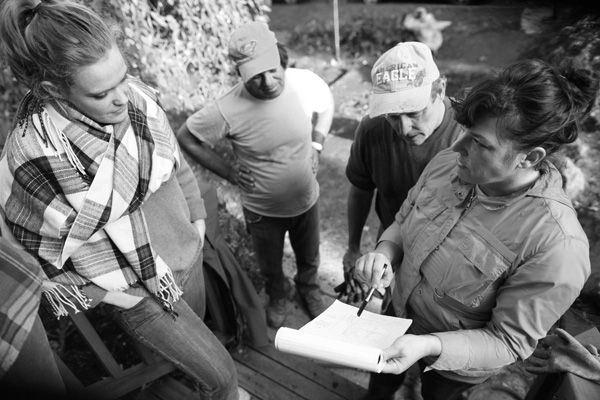
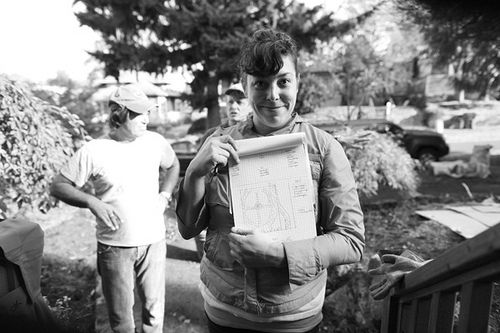
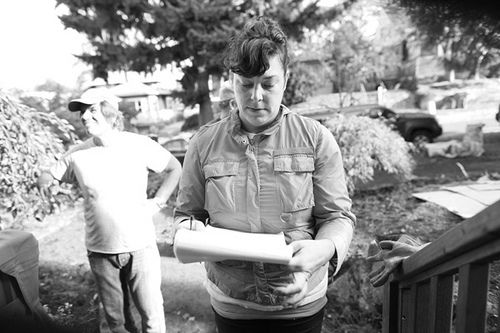
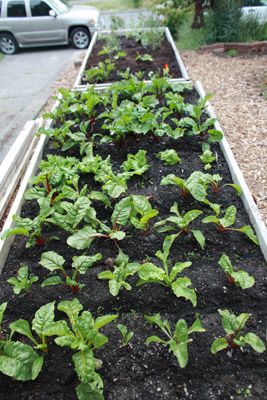
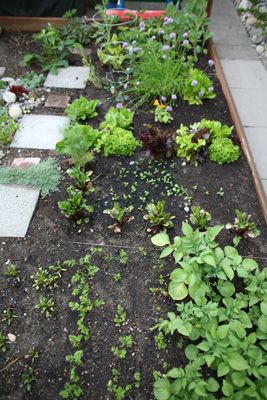
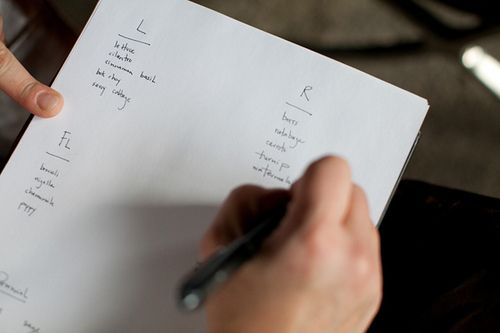
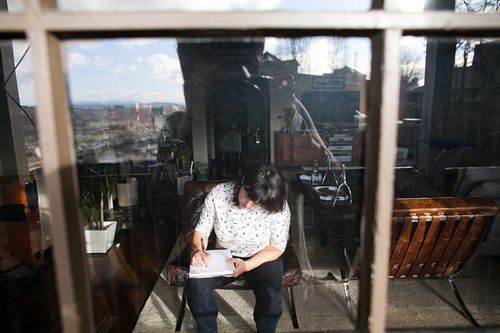
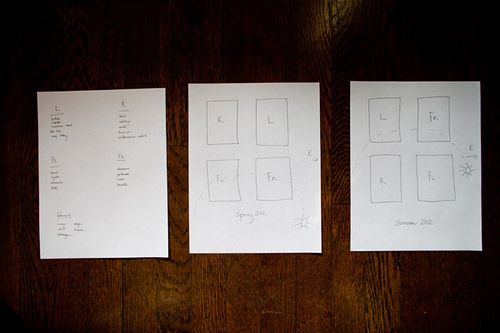
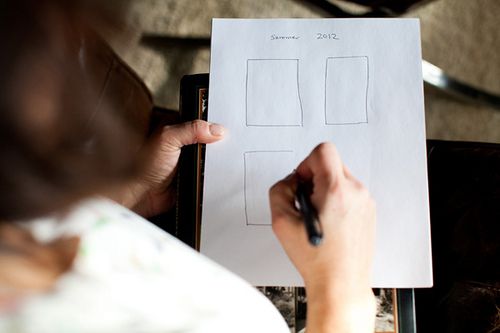

See what other Food52 readers are saying.